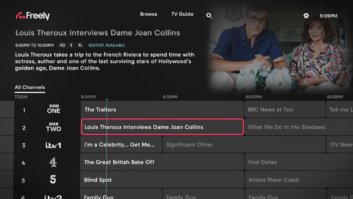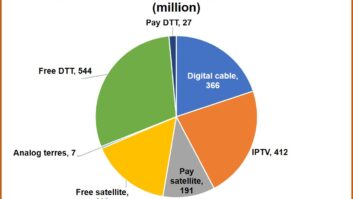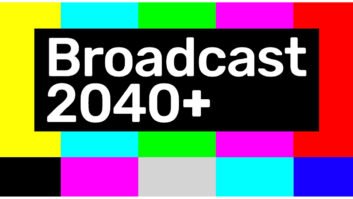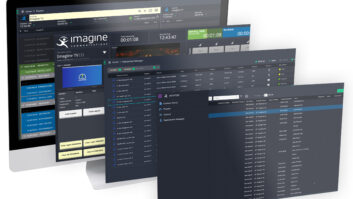As young audiences are increasingly captivated by digital content, it has become apparent that traditional broadcasters and content owners are facing a challenge of tuning into their viewing habits. Most teenagers and young adults access video content through social media and other online channels – neglecting the formats and platforms offered by traditional TV.
Naturally, viewing habits tend to gradually change across generations. The interests, lifestyle, expectations, and values of today’s teens and young adults predominately derive from the digital-first world they were raised in. Consequently, a substantial portion of these young audiences will be seeking digital-first content through digital channels.
This growing trend calls for an adjusted strategy that would allow broadcasters to keep up with younger TV-watching audiences. This would entail expanding their presence on platforms that are popular among this generation, while ensuring the integrity of their well-established and respected brand.
Untangling the generational divide
Over the past ten years, the popularity of streaming services has experienced rapid growth, while conventional TV viewing (via public service broadcasters) has halved among under-25s. This shows that in contrast to previous generations, younger TV viewers would rather use an on-the-go device than a remote control to switch on the TV.
The risk that they won’t be drawn to traditional TV platforms like older TV viewers is even greater with the growing popularity of online channels provided by tech giants – such as YouTube, Twitch and Facebook – which are creating and hosting enticing video content that resonates with digital-native audiences. As this is an alarming trend for the future of broadcast TV, it’s time to consider the viewers that will be tuning into broadcast TV in 25 years’ time. Can broadcast TV maintain its roots while staying relevant in the digital world?
Years of trying to compel younger audiences with broadcast TV haven’t quite made the grade. One of the solutions employed by the industry so far has been expanding the offering of broadcasters and content owners by creating brand new programming for numerous online platforms and their respective audiences. Although this can improve the relevancy of content across niche target groups, it doesn’t prove to be greatly efficient. Adversely, this approach increases the volume of content and the amount of resources needed to fulfil the high demand.
However, it remains crucial for broadcasters to acknowledge the benefits of having both a broadcast and online offering. Matt Hill, a research and planning director at Thinkbox, the marketing body for commercial TV in the UK, said that “it is unhelpful not to look at TV as a whole” when the content is created for and distributed across both broadcast and online channels. This mirrors a significant challenge facing many broadcasters as they work out a strategy that would marry the two together, while aligning their offering and drawing the attention of audiences of all ages to their service and brand.
The current digital climate became food for thought for us at Edgeware. We started brainstorming ways to improve broadcasters’ reach and relevancy, eradicating the need for entirely new programming. The goal is to simplify the content production pipeline to make it a lot more manageable, flexible and future-proof, while ensuring younger audiences are given the content they want.
Retuning the reach
To ensure brand exposure with the younger demographic, it’s worth adapting the format of existing content for each online platform. Broadcasters and content owners can stretch their reach beyond traditional channels by creating streams that publish different live and linear content adaptations on social media.
For years now, broadcasters have been striving to find an efficient and effective way to achieve this. But so far, considering various social media specifications to adhere to and subtitles to be added, duplicating content into numerous formats and then publishing the right format on the right platform has been labour-intensive, costly and time-consuming.
Using channel stitching technology to compose several channels in the streaming domain allows broadcasters and content owners to seamlessly deliver professional-grade TV on social media in a cost-efficient way.
Amplifying the relevance
Stepping away from the programming a broadcaster is most known for risks harming its well-established brand. Therefore, coming up with new content ideas can pose a great challenge, even for the savviest broadcasters. Sudden shifts in tone of voice and strategic direction can let loyal audiences down and make it difficult for the new, younger audiences to make the connection that will drive them back to broadcast TV in years to come. To boost their relevancy and eliminate the need to segregate programming per channel, broadcasters can get influencers on board to make the existing content more entrancing.
For example, to get closer to its younger fans, NBA G League shifted its focus from traditional broadcast to the video game streaming platform, Twitch. Streamers can now get creative with their own commentary to the live games, add it to the content and stream it on their own channels. As a result, what they get is a live broadcast experience with added production value. This unveils insights into the production elements and influencers popular among younger audiences.
From the technology that is decoupled from the creative side of production to the dialogue between engineers and creators to do things differently, there’s work to be done. But it’s possible for broadcasters and content owners to mitigate the age gap problem simply by transforming the traditional broadcast distribution model to one that’s a better fit for the online viewing behaviours of these much lusted after younger audiences.
The goal of this transformation is to give the younger generation the content of their choice on the platforms they want. Without it, it will be hard to put the remote control back in their hands. It’s time for broadcasters to recognise this and adjust their distribution strategy to build the bridge between generations of TV viewers.







